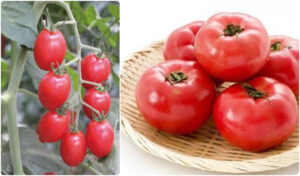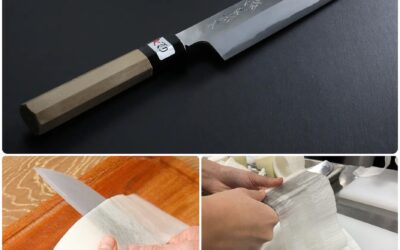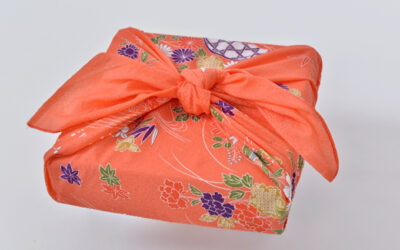
Originating in Mesoamerica about 7,000 years ago, tomatoes arrived in Japan early in the Edo period (1603-1868) having traveled the globe and being domesticated along the way. The first tomato plants in Japan were considered an ornamental — they were not cultivated for culinary purposes until the Meiji period (1868-1912). The painting above, 唐柿 tōgaki by 狩野探幽 Kanō Tan’yū (1602-1674 AD), a Japanese painter of the Kanō school, was one of the first images of tomatoes in Japan.
In 1894 a popular periodical, Fujin Zasshi (Women’s Magazine) featured a tomato stew — indeed many recipes at that time called for blanched, peeled and cooked tomatoes. It would be early Showa (1926-1989) before eating tomatoes raw became popular.
Today Japanese markets are filled with tomatoes best suited to tucking into bentō or to be used in salads, from candy-sweet, petite Hatsukoi (“first love”) on the left… to plump, sweet-and-tangy Momotaro (named after a popular folklore hero) on the right.

But the story of tomato-eating in Japan would not be complete without mentioning Kagome, the largest producer of tomato products in Japan. The company’s name, kagomé, means “lattice-weave basket” 籠目 and the logo (6-pointed star) was designed with that in mind. The founder of Kagome was Kanie Ichitarō 蟹江一太郎 (1875-1971), pictured upper right in the photo below. The 1923 package label for ketchup reads right to left, horizontally which was the fashion at the time.


For more inspiration and instruction on making summer tomato salads, visit the PROJECT Tomato Salad post.
And download a copy of my July 2023 newsletter to find out more about the history of tomato cookery in Japan.




